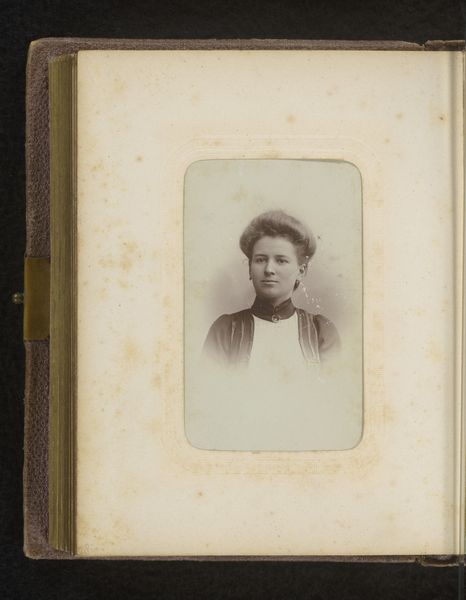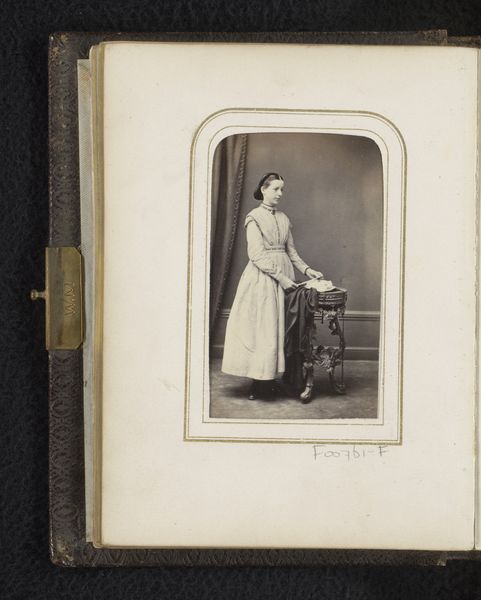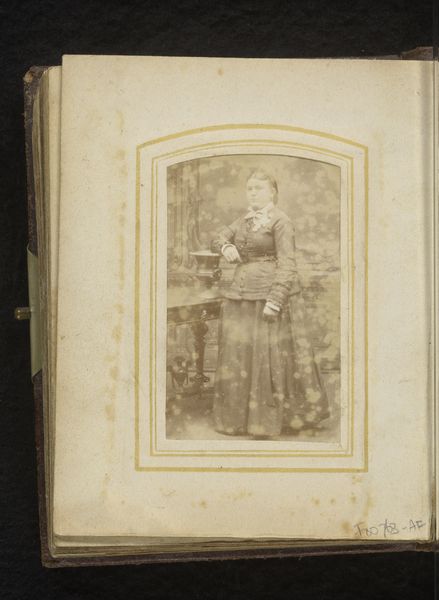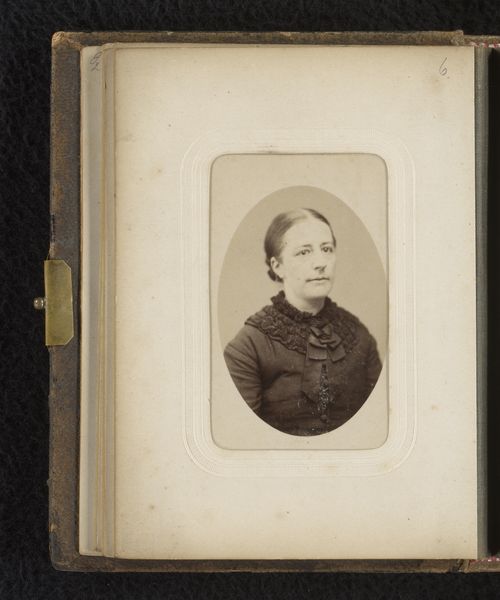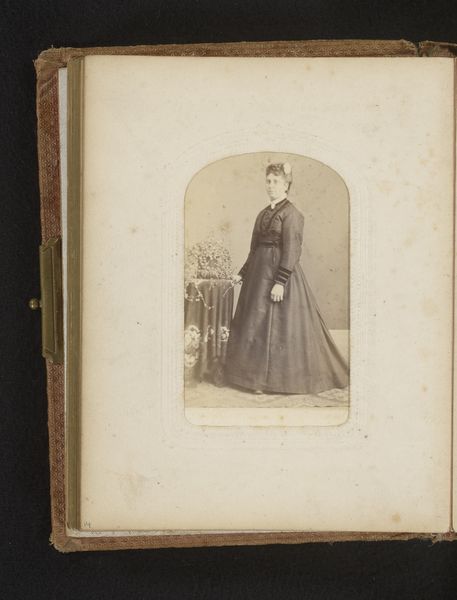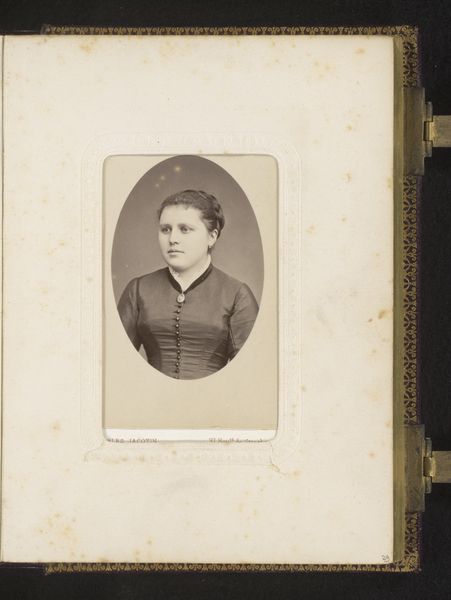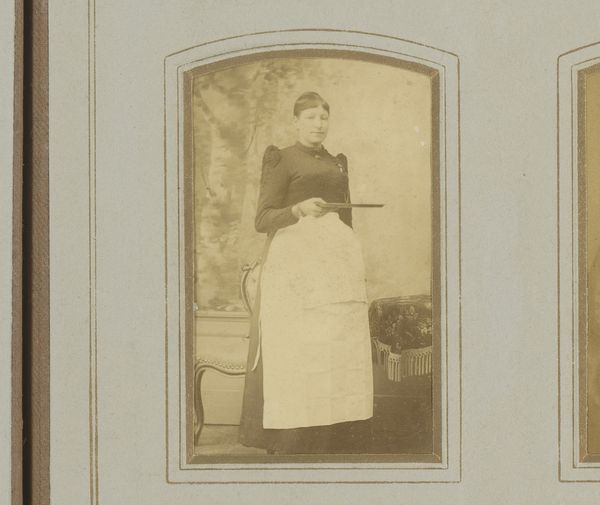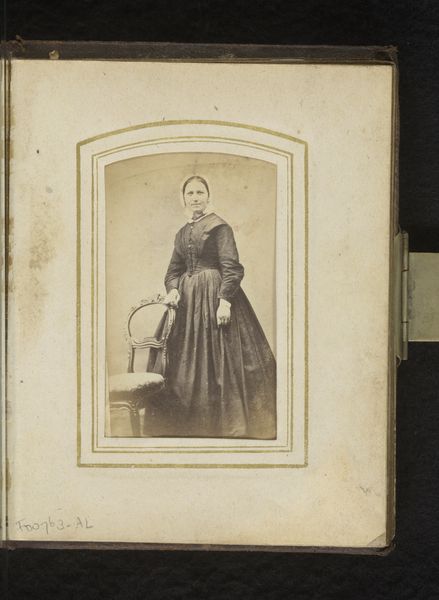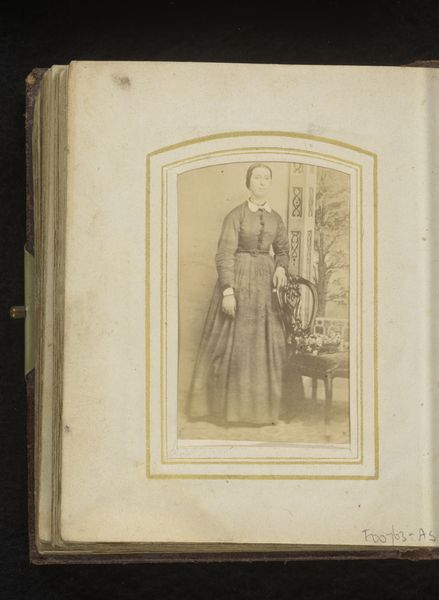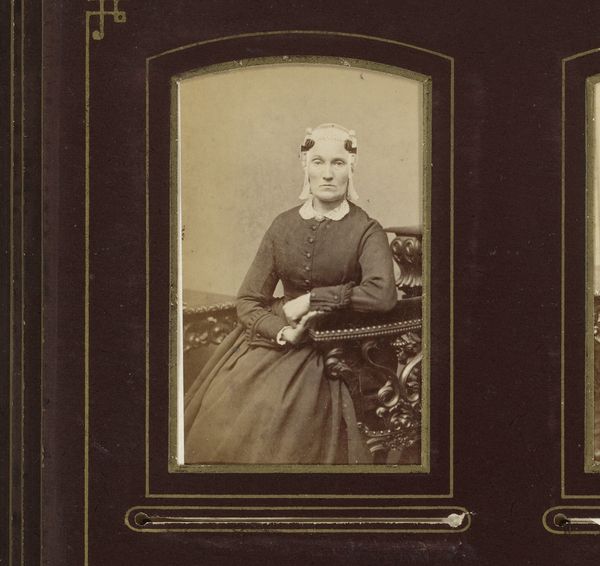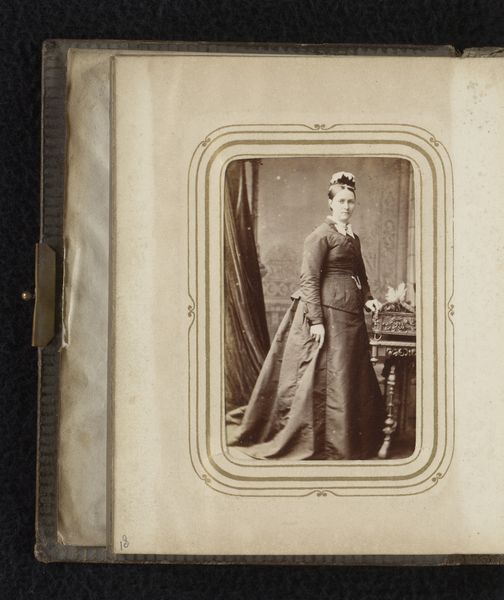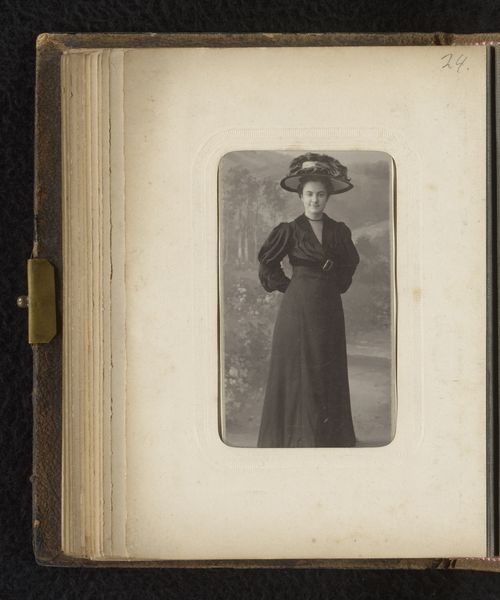
photography, gelatin-silver-print
#
portrait
#
pictorialism
#
photography
#
gelatin-silver-print
#
genre-painting
#
realism
Dimensions: height 84 mm, width 52 mm
Copyright: Rijks Museum: Open Domain
Curator: Here we have a gelatin-silver print by Adolf Héron, made sometime between 1894 and 1935. The work is titled "Portret van een vrouw met rieten mand, staand bij een hek" or "Portrait of a woman with wicker basket, standing by a fence." Editor: Immediately, I’m struck by its stillness. A constructed serenity that feels at odds with the socio-economic realities of labor during this era. Curator: Indeed, Héron's employment of pictorialist techniques softens the realism typical of the era. The composition emphasizes a genre-painting sensibility, positioning the subject almost as a character within a staged narrative. Editor: Exactly, it is this very constructedness which points to questions of labor exploitation and idealized portrayals of the working class. Consider the woman’s attire – a pristine white apron that seems hardly functional. Curator: Perhaps that's precisely the intention. By focusing on form—the stark contrast between the apron and her dark dress, the delicate wicker texture of the basket, and the structured lines of the fence—Héron creates a study in visual harmony, elevating the everyday to the level of art. Editor: I find that visual harmony disquieting. The fence, meant to symbolize enclosure, speaks volumes. It transforms what might have been a simple portrait into an ideological statement. One must also consider the absent story. What is in the basket? Is it the product of labor for sustenance or surplus to enrich the bourgeois owner? Curator: That the subject gazes directly at the viewer invites further investigation of psychological engagement. Do we as the viewer become active agents, or does her unyielding, unflinching gaze offer up social commentary? Editor: Ultimately, Héron's "Portrait of a Woman" leaves us contemplating the intersection of representation, labor, and the power dynamics embedded within photographic portraits. Curator: The visual echoes and stark aesthetic considerations provide fodder for contemporary aesthetic dialogues on both the power of representation and photography’s historical significance.
Comments
No comments
Be the first to comment and join the conversation on the ultimate creative platform.
